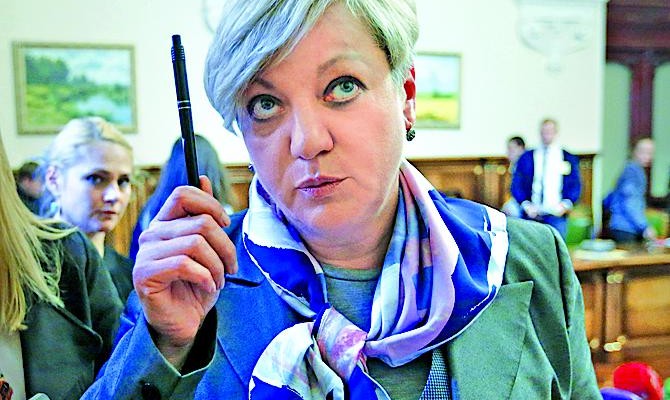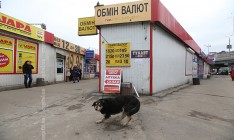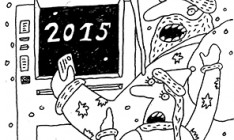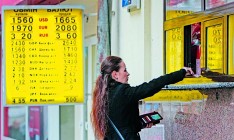Finance
currencyThe NBU will seek a fair value of the hryvnia at hard currency auctions

The National Bank of Ukraine is changing its strategy of supporting the market with hard currency by rejecting targeted hard currency auctions to replenish the cash reserves of banks and to support importers. Instead, on November 5 the central bank will begin holding auctions without requirements for the use of foreign currency sold on these auctions, said NBU Governor Valeriya Hontareva after her meeting with representatives of the country’s 40 strongest commercial banks.
The schedule of auctions will also be changed. While over the past two months auctions were held once or twice a week, now they will be held on a daily basis. As Hontareva underscored, the objective of the new regime is to not satisfy all demand on market, but find a new equilibrium of the exchange rate of the hryvnia in lieu of the UAH 12.95/US $ reference point recommended earlier by the NBU.
Closed auctions
Initially, the NBU will exclusively sell hard currency on auction, though after several weeks it may start buying it. Every day from 9:00-10:00 in the morning the central bank will accept bids of the banks and then process them according to the Dutch principle – from the highest exchange rate to the lowest – and will satisfy the winners. All banks for which limits have been set by the NBU will be allowed to participate in the auctions, meaning 88 financial institutions, Hontareva specified. Every bank will be allowed to submit a bid for a minimum of US $100,000, but no more than 10% of the total volume of currency put up for sale. The NBU did not specify the approximate volume of sales or at least its maximum limit. As Hontarev admitted, this will not be a large sum. Over the period September-October a total of US $1.6 bn was already sold on the NBU auctions. By distributing this sum over 45 working days in both months the central bank would have been forced to sell US $35 mn per day.
The exchange rate formed during the course of an auction will be known by 11 am. It will show the cut off price on the auction and the weighted average rate. Most likely this rate will lie in the basis of transactions on the interbank market. “We are geared towards quickly finding the right exchange rate,” believes Chairman of the Board of Raiffeisen Bank Aval Volodymyr Lavrenchuk. In his opinion, the corridor of fluctuation of the exchange rate will become clear after two to three months.
Radar for the hryvnia
The NBU could not give a straightforward response to the question whether or not the attempt at forming the exchange rate through auctions could lead to devaluation of the hryvnia. “Depending on which banks submit their applications, that’s the direction in which the exchange rate will go. If demand is deferred, then at some interval (of time – Capital) it could shoot up,” Hontareva presumed. However, she said that the deferred demand is not large and continues to fall. “When we first started the auctions for importers, demand was much higher than our supply,” says Hontareva. “With every auction held this sum (difference – Capital) decreased”. On the last auction for the support of importers held on October 31 the NBU sold US $200 mn and deferred applications worth another US $200 mn were left over.
The NBU is confident that equilibrium on the market will be easy to find seeing as one of the largest buyers of hard currency Naftogaz of Ukraine will not have an impact on demand. The company will by hard currency directly from the NBU, not on the currency market. For this reason, Hontareva is confident that with the absence of panic moods an equilibrium rate will be close to the current rate of UAH 13/US $.
But holding these auctions does not mean that importers will be able to quickly satisfy the demand that accumulated due to the ban on hard currency settlements that was lifted on Monday and the impossibility to buy hard currency on the market. As Chairman of the Board of the Credit Agricole Bank Yevheniya Chemeris explained, it is not likely that all companies will be able to buy hard currency today or even tomorrow as exporters are still not selling enough of it. Even if the metallurgy is revived its export proceeds will not be recovered over the next several weeks, while the proceeds from agrarians are insufficient to satisfy the demand of importers that formed over the past two months.
At its own expense
The plan of the NBU evokes apprehensions regarding the state of the bank’s hard currency reserves. At the start of October the NBU reserves were US $16 bn in total, which is barely enough to cover two months of import, US $14.8 of which are in the form of hard currency. Before the start of November the volume of NBU reserves should have dropped even more taking into account that in October the central bank spent US $1.6 bn to pay off the Eurobonds of Naftogaz of Ukraine and US $1.3 bn on the sale of hard currency on auctions.
Meanwhile, the NBU plans to hold such hard currency auctions for at least three months and possibly for half a year. Spending an average of US $35 mn on a daily basis starting Wednesday the NBU will spend US $1.4 bn by the end of this year. At the same time, reserves will drop in connection with the fact that all payments of Ukraine for gas will be effectuated from these reserves. Furthermore, Ukraine receives the next loan tranche from the International Monetary Fund no sooner than in 2015.






 of the agreement of syndication with Financial Times Limited are strictly prohibited. Use of materials which refers to France-Presse, Reuters, Interfax-Ukraine, Ukrainian News, UNIAN agencies is strictly prohibited. Materials marked
of the agreement of syndication with Financial Times Limited are strictly prohibited. Use of materials which refers to France-Presse, Reuters, Interfax-Ukraine, Ukrainian News, UNIAN agencies is strictly prohibited. Materials marked  are published as advertisements.
are published as advertisements.